

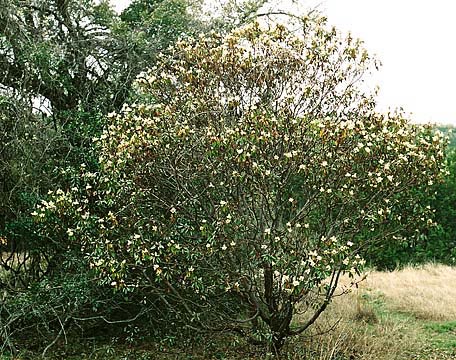
Blooming in early spring 2003 |
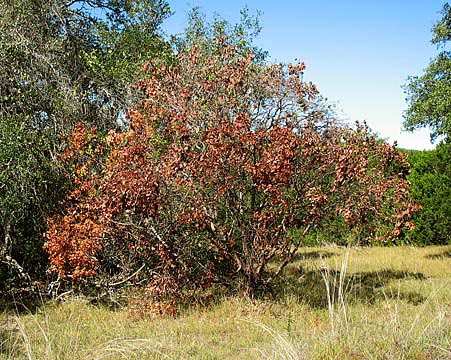
October 2008 |
|---|
This madrone had also suffered greater porcupine damage than any other, first in 2003, and finally in the winter of 2008. But the porcupines had not ringed any major trunk, and this limited damage had not generally proved fatal.
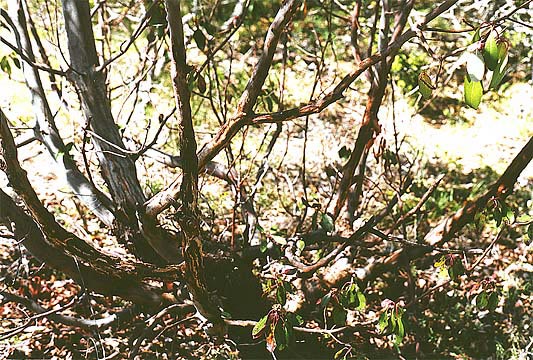
Porcupine damage, 2003 |
|
|---|---|
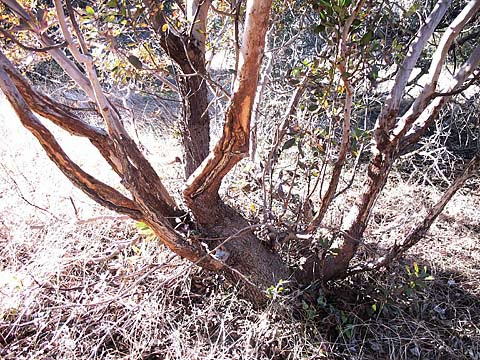
January 13, 2008 [Note the scars from earlier damage.] |
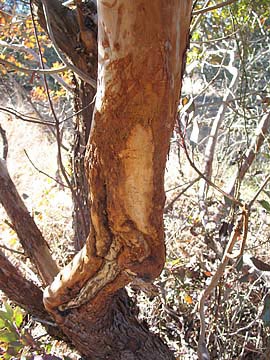 Detail |
In 2006 one major trunk of the tree started dying, well above the porcupine damage. There was a deep split in the wood, visible in the detail below.
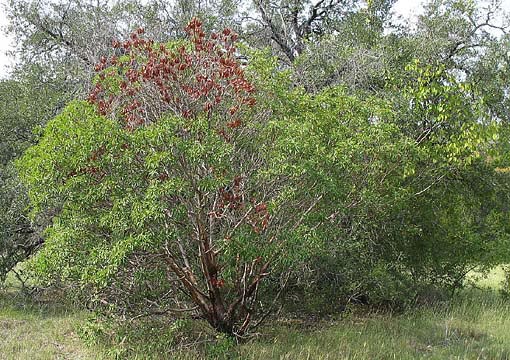
Dying trunk, October 7, 2006 |
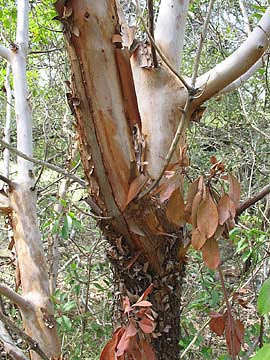
Detail |
|---|
But in spring 2007 (after the drought year 2006) everything seemed back to normal:
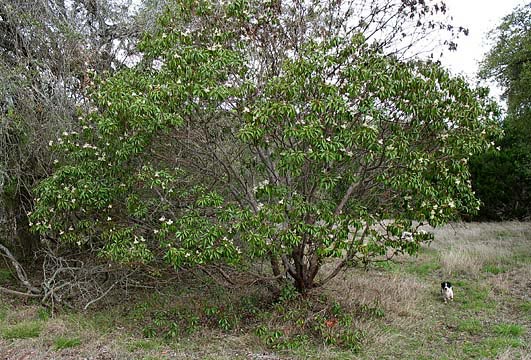
Bloom, March 28, 2007 |
|---|
The next, more extreme, drought began in 2008, along with new porcupine attacks. The tree began to show signs of something more seriously wrong in late July and by early August most of the tree had turned brown.
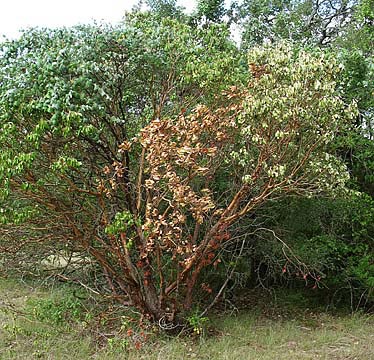
Dying section, July 23, 2008 |
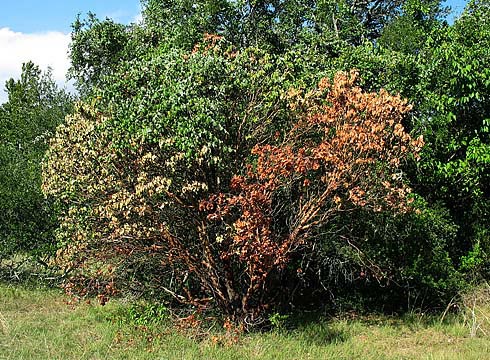
Additional dying sections, August 2, 2008 green leafs in center are mustang grape vines |
|---|
By October 2008 the tree was completely dead [see above].